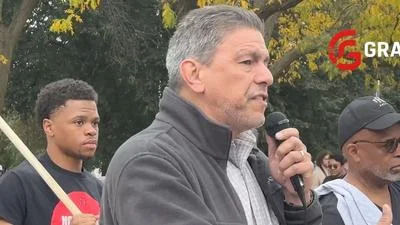Mayor Brandon Johnson | Mayor Brandon Johnson (https://www.chicago.gov/city/en.html)
Mayor Brandon Johnson | Mayor Brandon Johnson (https://www.chicago.gov/city/en.html)
Bond issuance would empower new approach to affordable housing, economic development
CHICAGO — A planned $1.25 billion bond issuance announced by Mayor Brandon Johnson today would restructure the City of Chicago's approach to equitable neighborhood development and distance itself from the challenges of the primary public finance tool of previous administrations.
"These bond proceeds will provide the City with much-needed resources to invest in our neighborhoods,” said Mayor Johnson. “This new direction will allow for greater flexibility than the City’s Tax Increment Financing program and provide critical assistance for new businesses, restaurants, affordable homes, and cultural facilities where they’re needed most -- not just where there’s a healthy TIF district.”
Pending City Council approval, the Housing and Economic Development Bond would provide $250 million for community improvements throughout Chicago every year for five years (2024-2028). The Department of Housing (DOH) and the Department of Planning and Development (DPD) would utilize the proceeds with fewer limitations involving geographic boundaries, eligible costs and market-driven variables that decrease TIF’s effectiveness in depopulated and disinvested neighborhoods.
“The expiration of one third of the City’s 121 designated TIF districts over the next three years underscores the need for a new, more effective source of public financing,” said DPD Commissioner Ciere Boatright.
“The TIF expirations create an unprecedented opportunity to restructure City funding with more equitable methods like the $1.25 billion Housing and Economic Development Bond,” Commissioner Boatright said, referencing the substantial public support needed to complete major private investment projects on the West and South Sides. “As a more flexible form of financing, the bond will add to our existing tools to support a broader range of projects and better meet the unique needs of Chicago neighborhoods.”
“With the dependence on TIF, the Housing Department struggled to fund major projects that weren’t within a healthy TIF district,” DOH Commissioner Lissette Castañeda said. “The bond proceeds will provide a more strategic approach and expand the geography where we can provide critical funding assistance.”
DOH would use $625 million of bond proceeds to provide approximately:
• $360-390 million for the construction and preservation of affordable rental homes.
• $210-240 million for the construction and preservation of homeownership, or affordable owner-occupied housing.
• $20-30 million for the preservation of single-room occupancy structures.
DPD would use $625 million of bond proceeds to provide approximately:
• $400-500 million for neighborhood development grants.
• $80-115 million for small business support.
• $55-90 million for jobs and wealth building, including workforce training and missing middle housing infill development.
Bond proceeds would be received by the City upon their purchase by municipal bond buyers. Principal and interest costs, estimated at $2.4 billion over the next 37 years would be fully paid for by projected increases in citywide tax revenues due to expiring TIF districts.
Bond oversight and monitoring would be administered by DPD and DOH with regular reporting to City Council and the public, including redevelopment agreement requirements involving job creation and retention; local, women and minority hiring; housing affordability provisions and tenancy; public benefits, and other factors.
Bond-related funding is an alternative to the City’s routine approach to TIF district expirations after 24 years. Of the 72 expirations that have occurred since 2008, 34 districts were extended for an additional 12 years.
The City initiated TIF districts in 1984 through a state statute that enables municipalities to allocate all new property tax growth – or increment – within a designated district toward improvement projects within its boundaries. In Chicago, TIF is generally used for the construction and rehabilitation of affordable homes, public infrastructure, capital investments performed by Chicago Public Schools and the Chicago Park District, and select costs involving economic development projects, among other uses.
At the end of a TIF district’s term, its tax levies are redistributed, usually at a much higher level, to all the public agencies that levy taxes. Chicago Public Schools, for example, will realize $56 million in new tax revenues from expiring TIF districts in 2025, increasing to approximately $150 million in 2029.
If approved by City Council, bond proceeds could be allocated for neighborhood development projects starting later this year. Additional details about revenue and spending projections are available on the bond’s website.
Original source can be found here.






 Alerts Sign-up
Alerts Sign-up